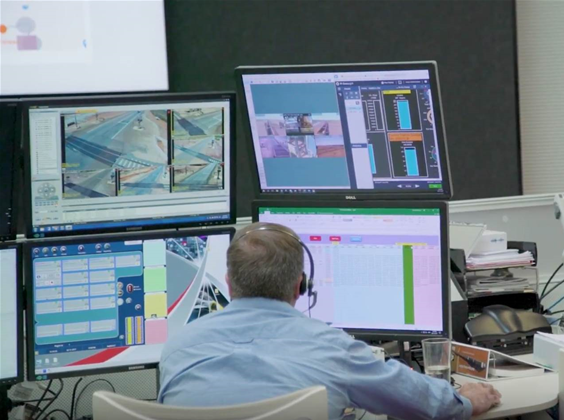Iron ore miner Roy Hill has provided the first detailed look at the interior layout and design considerations of its remote operations centre in Perth.

The miner appears in two videos by one of its technology partners, Schneider Electric, whose stack was revealed late last year to be powering a significant portion of monitoring, control and optimisation of the miner’s value chain.
Much of that software came from an acquisition of Adelaide’s SolveIT, which Roy Hill had signed up to use back in 2012 before the ISV was bought out.
The videos detail the backdrop of the miner’s remote operations centre, as well as commentary from the company on the basis for its design.
The miner’s demand chain general manager Mike Lomman said the layout mimicked the transfer of ore from pit to port.
“In terms of how we’ve laid out the remote operations centre, from the very right hand side of it is where we control the mine, and then if you move across to the left there is a fairly logical progression towards the port,” he said.
“So effectively from right to left in the room follows the production chain from end-to-end.
“The other arrangement in terms of front to back is really around time - so the further away you are from the action, the further back in the room you sit.”
Lomman and his team highlight, however, the “interconnectedness” of the seating arrangement.
“The process of getting to here was very much around really passionately wanting to understand how everything fits together, and then taking that apart and re-putting it back together,” he said.
Lomman said he had encouraged ROC staff to “take a systems view” of the organisation when making decisions, “taking into account interdependencies … between people, process, technology, data and equipment and all of those sorts of things”.
He said that had helped generate ideas from different parts of the business “around how we can easily but fundamentally step change the performance of the organisation”.
“In reality it means rather than operating in silos such as port or rail, we operate across the business,” automation program director Christine Eriksen said.
“It’s so important in automation and where we start to use technology, because you’re less reliant on structures like hierarchy but more reliant on how you collaborate with each other to get the job done.
“Machine learning, AI, VR, augmented reality - the ‘digital twin’ - is what enables our people to focus on more value-added work rather than repetitive work.”
Being a relatively new operation, Roy Hill placed automation at its core from early in the process. Last year, it brought remote-controlled bulldozers to its site.
Schneider Electric is not the only software vendor to have systems deployed at Roy Hill; Azure and SAP are also known to be part of the company’s operations.




_(22).jpg&h=140&w=231&c=1&s=0)
_(20).jpg&h=140&w=231&c=1&s=0)





 iTnews Executive Retreat - Security Leaders Edition
iTnews Executive Retreat - Security Leaders Edition











_(1).jpg&h=140&w=231&c=1&s=0)



